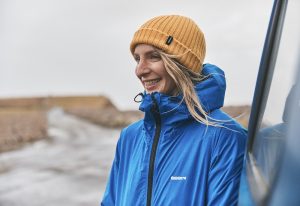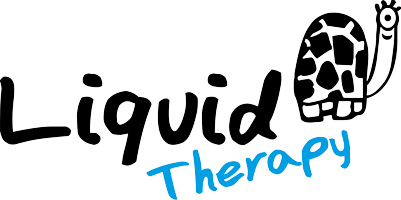Surf Therapy — The power of surfing and the sea to heal
By Dr. Easkey Britton, PhD
Throughout history, the sea has held a place of power in our collective imagination. We might fear it, but we’ve always been drawn to it. When we’re away from it, we’re left with a feeling of longing. Environmentalist Rachel Carson argued in The Sea Around Us, her stunning account of the human relationship to the ocean, that we are all tied to our origins in the ancient sea.
Considering the links between the ocean and human health, it comes as little surprise that there has been a surge in research on the benefits of nature connection, especially blue space (the sea and other water environments) on our health and wellbeing. We are in the midst of a global health crisis that relies heavily on medicalised intervention, with rising rates of prescription drug use to treat depression, stress, anxiety and mood-related disorders. In this context, blue therapy, or ocean therapy, is ever more crucial. This applies especially to children, as in modern society children are spending less time than ever before outdoors and are consequently suffering from what Richard Louv calls Nature Deficit Disorder. Scientific studies are only now catching up with what I’ve intuitively known and felt my whole life — that the sea holds a great power to heal.
Blue care

Blue space, aquatic environments like the sea, are the most psychologically restorative of all environments for humans. This offers huge potential for novel health care interventions and health promotion. Ocean therapy, also referred to as ‘blue care’, involves water-based activities or ocean programs designed to assist individuals coping with mental, emotional and physical illness by accessing the ocean environment. Engaging with marine and coastal environments offers very different sensory experiences to land-based environments, with different health and wellbeing outcomes and benefits.
Surfing is an embodied way of interacting and experiencing the natural world. As a result, surf therapy is emerging as one of the most rapidly growing ‘blue care’ activities, an alternative and complimentary therapeutic intervention that taps into the healings powers of the sea. There are surf therapy organisations in 6 of the 7 continents of the world, offering programmes for a diverse range of vulnerable and minority groups.
Why surfing?
There is strong evidence to support the health benefits of surf therapy, especially for our emotional and psychological wellbeing. The health benefits are linked to its fluid and dynamic nature — surfing demands a focus on the present, offering respite from everyday anxieties. Feelings of presence, flow and a connection to nature were often reported by participants across various surf therapy studies. This enhanced sense of connectedness, joy and psychological wellbeing could, in turn, reduce dependency on anti-depressant medication.
Other findings point to the health benefits from immersion in the sea and surf and how ocean therapy activities can act as a tool to experience this sensory world more directly. The multi-sensory nature of surfing activates the entire sensory system at a cellular level and enhances neuroplasticity, helping the brain become more agile and adaptive. Responding to the movement of the waves and learning to balance on a surfboard can help improve physical health outcomes such as mobility and reduced inflammation for amputees or those with spinal cord injuries. This, in turn, can lead to a reduction in the use of narcotics for pain management.
Crossing the threshold from shore into the sea, one enters an unfamiliar, ever-changing environment. Surfing has the potential to provide the opportunity to overcome fears in a playful way. This added challenge and unpredictability associated with surfing can build resilience, helping us to better cope with stress in our wider lives. According to Dr. Jamie Marshall the challenging and physically demanding nature of the activity can also help participants feel a sense of mastery at learning a new skill. Learning to surf in a group context can also enhance a sense of belonging and identity through shared experiences in the surf.
Trauma, surfing and healing
In my new book, ‘Ebb and Flow: Connect with the patterns and power of water’, I begin to unpack some of the ways restoring our connection with water, through therapeutic settings, may be particularly beneficial for working with trauma. Surfing requires a form of ‘mindful embodiment’ that can support the repair of the mind-body connection. As health geographers Hope Juster-Horsfield and Sarah Bell wrote in 2022, this can help participants form, “new identities through these ocean encounters”. They beautifully sum up in their study how these outcomes are attributed to, “to the sensory, social and inclusive qualities of the program, as well as opportunities to build the skills and confidence required to negotiate the physical risks of being in the ocean in a supported way”.
In conclusion, surf therapy provides a lens to see, understand and experience the ocean as healing, restorative and health-enabling. It offers potential for novel health care interventions and health promotion, especially at a time of heightened psychological distress in the face of multiple global crises. To realise the potential of surf therapy we need to restore the ocean as a safe and healthy space for all.
To learn more about surf therapy and Easkey’s mission to restore our connection to ‘blue spaces’, pick up a copy of her book Ebb and Flow: Connect with the Patterns and Power of Water (Watkins, 2023) and Saltwater in the Blood: Surfing, Natural Cycles and the Sea’s Power to Heal (Watkins, 2021).

